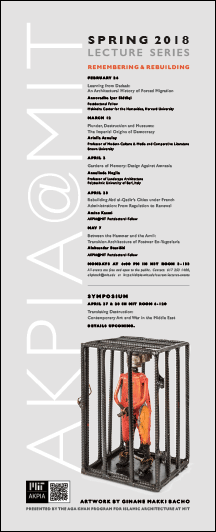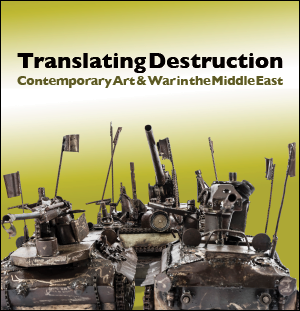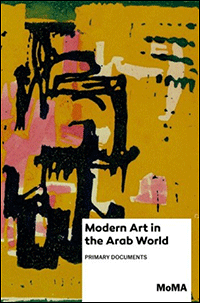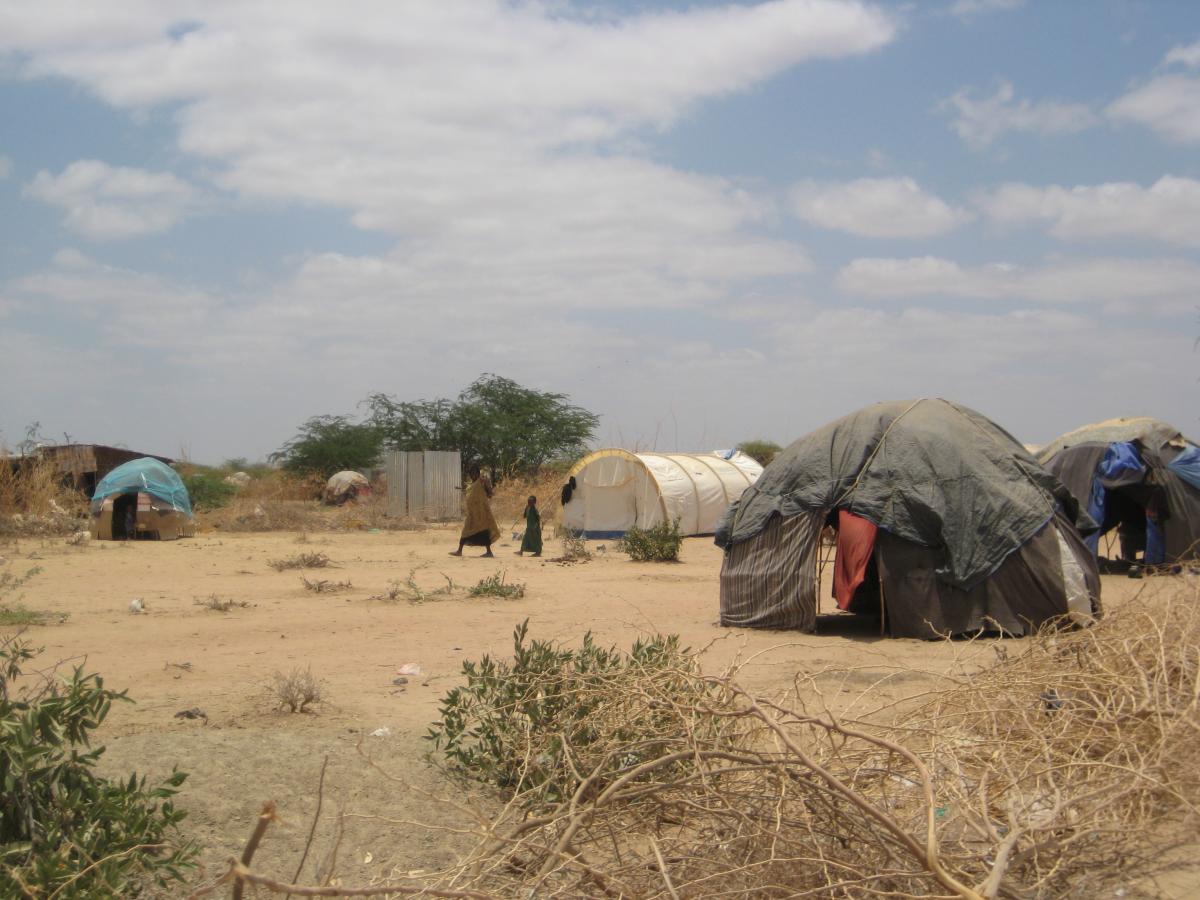Lectures, Conferences & Events» Past Lectures & Events
 |
 |
 |
Thursday, May 24, 2018 6-8 PM in the Stella Room (7-338)
Modern Art in the Arab World: Primary Documents – book launch and roundtable discussion
We are happy to announce a conversation with Anneka Lenssen, Sarah Rogers and Nada Shabout, celebrating the launch of their new edited volume Modern Art in the Arab World: Primary Documents(2018). The event will take place on Thursday, May 24, 2018 6-8 PM in the Stella Room, and the roundtable discussion will be moderated by AKPIA students Sarah Rifky and Suheyla Takesh.
Modern Art in the Arab World: Primary Documents (2018)–an anthology of translated art writing by artists and intellectuals in the Arab world of the twentieth century–offers an unparalleled resource for the study of modernism. Many of the published texts are appearing for the first time in English, and include manifestos, essays, discussion transcripts, diary entries and letters. The book is the eighth volume in The Museum of Modern Art’s Primary Documents series, which offers access to essential documents for the study of global modernism. This edition, includes sixteen new entries, by the editors and other scholars, and a new essay by the historian and Arab-studies scholar Ussama Makdisi providing a historical overview of the region’s intertwined political and cultural developments in the twentieth century.
During this event, we will talk to the editors about how this project came about, the intricacies and challenges of the creating this archive, the challenges of organizing, selecting and contextualizing the material included in the book, and more broadly what bearings this project has on new histories of global modernism under construction.
Anneka Lenssen is Assistant Professor of Global Modern Art, at UC-Berkeley. She received her PhD in 2014 from the History, Theory, Criticism program and Aga Khan Program for Islamic Architecture at MIT. Her current book project, Beautiful Agitation: Modern Painting in Syria and the Arab East, is a study of avant-garde painting and the making of Syria as a contested territory between 1920 and 1970.
Sarah Rogers is an independent scholar. She earned her PhD in 2008 from the History, Theory and Criticism program, where she wrote her dissertation “Post-war Art and the Historical Roots of Beirut’s Cosmopolitanism.” She is a founding member of the Association for Modern and Contemporary Art of the Arab World, Iran and Turkey (AMCA) and is currently writing a manuscript on the development of modern art in Beirut within the international context of the Cold War.
Nada Shabout is a Professor of Art History and the Coordinator of the Contemporary Arab and Muslim Cultural Studies Initiative (CAMSCI) at the University of North Texas. She is author of Modern Arab Art: Formation of Arab Aesthetics (2007) and the founding president of the Association of Modern and Contemporary Art of the Arab World, Iran and Turkey (AMCA), and has served as Consulting Director of Research at Mathaf: Arab Museum of Modern Art, Doha. She has curated a number of exhibition including the inaugural show Sajjil: A Century of Modern Art, at Mathaf, in Doha in 2010.
April 23
Rebuilding Abd al-Qadir’s Cities under French Administration: From Regulation to Renewal
Amine Kasmi
AKPIA@MIT Postdoctoral Fellow
Abstract
War-torn countries have in common the brutal nature of the destruction, affecting simultaneously several cities, over large areas. However, throughout history, the rebuilding of war-devastated cities has taken place in very different forms. In this context and among the wars that the central Maghreb (present-day Algeria) has sustained was the resistance war to the French occupation; an armed conflict that opposed the resistance leader Emir Abd al-Qadir and the French colonial army, from 1832 to 1847. After the end of the war and the defeat of Abd al-Qadir, the reconstructions were carried out in particularly difficult conditions: lack of funds, political instability, building materials shortages, large numbers of displaced people, and insecurity. Moreover, the colonial context made the task of rebuilding more complex. Because of the dual nature of the cities under colonization, two societies were juxtaposed. Colonized and colonizers both started to (re)build, each in the areas intended for them, each according to their know-how and ability.
Based on this, the lecturer raises questions about the modalities adopted by the French colonial administration to achieve the rebuilding of devastated cities in such a critical economic and political situation. The idea put forward is that the colonial administration placed a moratorium on the rebuilding task by assigning it to individuals at first, and then promoting large-scale renovations. Thus, this administration converted the “rebuilding task” into an “urban renewal task.”
April 2
Gardens of Memory: Design Against Amnesia
Annalinda Neglia
Professor of Landscape Architecture
Polytechnic University of Bari, Italy
Biography
Giulia Annalinda Neglia is Assistant Professor in Landscape Architecture at the Department of Civil Engineering Sciences and Architecture of the Polytechnic University of Bari (Italy). She received her Ph.D. in Architectural Design for Mediterranean Countries from Polytechnic University of Bari in 2003 with a thesis on Aleppo (Syria).
For her researches on Mediterranean – Islamic cities and landscapes she has received scholarships from international and national research centers such as the Aga Khan Program for Islamic Architecture at MIT, DAAD (Deutscher Akademischer Austauschdienst), Max van Berchem Foundation (Geneve), the Italian Ministry of Education, East-West Nexus / PROTA Institute, and Polytechnic University of Bari.
An author of three monographs on Islamic cities and landscapes and more than 90 articles and essays in books, proceedings of international conferences and peer-reviewed journals, her interest cover basic research, applied research, theory and methodology, spanning from sustainable (urban and landscape) design, to analytical work on typo-morphology of Middle Eastern, Balkans and North African landscapes, cities and urban fabric, history of Islamic architecture, and cultural heritage preservation.
Her recent research has been focused on new regional models for sustainable urban and landscape regeneration of non-core areas, grounded on the relationship between urban fabric, open spaces and gardens.
February 26
Learning from Dadaab: An Architectural History of Forced Migration
Anooradha Iyer Siddiqi
Postdoctoral Fellow
Mahindra Center for the Humanities, Harvard University

Abstract
What do we see, when we see a refugee camp? States providing asylum are often unwilling to integrate refugees into the economy or social structure, and maintain them in remote camps in undeveloped areas, served by parallel systems or foreign aid. Refugees in camps inhabit edge conditions, surviving between competing entities and interests. The casual images of precarity that ensue form the dominant visual archive.
Yet, a narrative of refugees as superfluous humanity and theorization of camps as extraterritorial may be dispelled by an exercise in close looking at architecture and history. Thinking with the Somali refugees in the camp complex at Dadaab, Kenya, offers purchase on a set of questions: of the relationship between the camp and the city, of shared humanitarian, colonial, and territorial histories, and of architecture as spatial politics. As the largest ever field site administered by the United Nations High Commissioner for Refugees, in operation since 1991, Dadaab offers an anchor point for many histories—of Africa, Islam, migration, urbanism, humanitarianism, development, war, heritage—and also offers a historiographic model: for architectural history in a refugee camp.
Biography
Anooradha Iyer Siddiqi is an architectural historian and postdoctoral fellow at Harvard University Mahindra Humanities Center, and joins Barnard College, Columbia University in 2018. Her research stems from two book projects, Architecture of Humanitarianism: The Dadaab Refugee Camps and Emergency Urbanism in History and Vocal Instruments: Minnette De Silva and an Asian Modern Architecture, with articles in The Journal of the Society of Architectural Historians, The Journal of Architecture, Architectural Theory Review, Grey Room, and the volume Spatial Violence (Routledge, 2016, special issue co-editor). She received a Ph.D. in the History of Art and Archaeology from the Institute of Fine Arts at New York University, and practiced architecture in Bangalore and New York.
May 7
Between the Hammer and the Anvil: Transition Architecture of Postwar Ex-Yugoslavia
Aleksandar Staničić
AKPIA@MIT Postdoctoral Fellow
Abstract:
Is war destruction the final act of “urbicide” – the killing of a city? If it is to be judged by the postwar reconstruction of Yugoslav cities, the only acceptable answer would be a resounding – no. Today the predominant sentiment among its citizens and scholars alike is that the violent conflict was just a trigger for the systematic devastation of socialist and modernist architectural heritage, the maltreatment of which continued as the default strategy for (re)creating national identities long after the war. Within the intense processes of post-conflict reconstruction, Yugoslav cities were drastically redefined and recalibrated to fit new political, social and economic realities.
Multilayered investigations into modalities in which architecture engaged with violence and ideology to produce a myriad of informal archetypes is possible through construction of a histoire croisée of the multiple architectural sources and histories. Set in the distinctive political and cultural context of a post-war and post-socialist Yugoslavia, this lecture will tackle the complex processes of urban renewal in a harshly polarized society struggling to overcome the challenges of economic, cultural and ideological transitions. Special emphasis will be given to the dual, yet diminishing, role of architects as both active voices in a public discourse, and translators of socio-political forces into architectural form.
Bio:
Dr. Aleksandar Staničić is an architect and postdoctoral fellow at the Aga Khan Program for Islamic Architecture in the MIT Department of Architecture. Previously, he was an associate research scholar at the Italian Academy for Advanced Studies in America at Columbia University. His research stems from two book projects, Transition urbicide: Post-war reconstruction in post-socialist Belgrade (author) and War Diaries: Responding to the Destruction of Art and Architecture (co-editor). The research project he is conducting at MIT seeks to systemize and criticize broader socio-political, cultural and ethical contexts in which ongoing academic discourse on reconstruction of cities in the Middle East occurs. He published book chapters in edited volumes War (Hi)stories: War and the Urban Context and Affective Architectures: More-than-representational Approaches to Heritage, and several articles and essays in Architecture and Culture: Spaces of Tolerance, Kamenzind, Le caserme: Architettura, urbanità e riuso, Politics in the history of architecture as a cause and consequence. Dr. Staničić received his Ph.D. in Architectural Composition from the Polytechnic University of Milan in 2014, with a Doctor Europaeus Certification, and M.Arch. from the Faculty of Architecture, University in Belgrade.